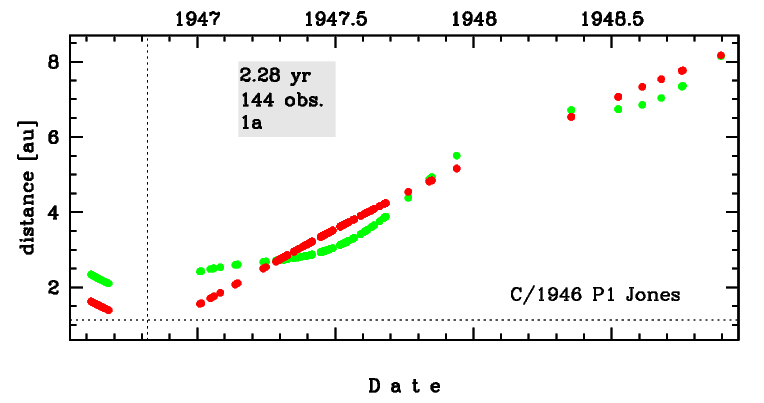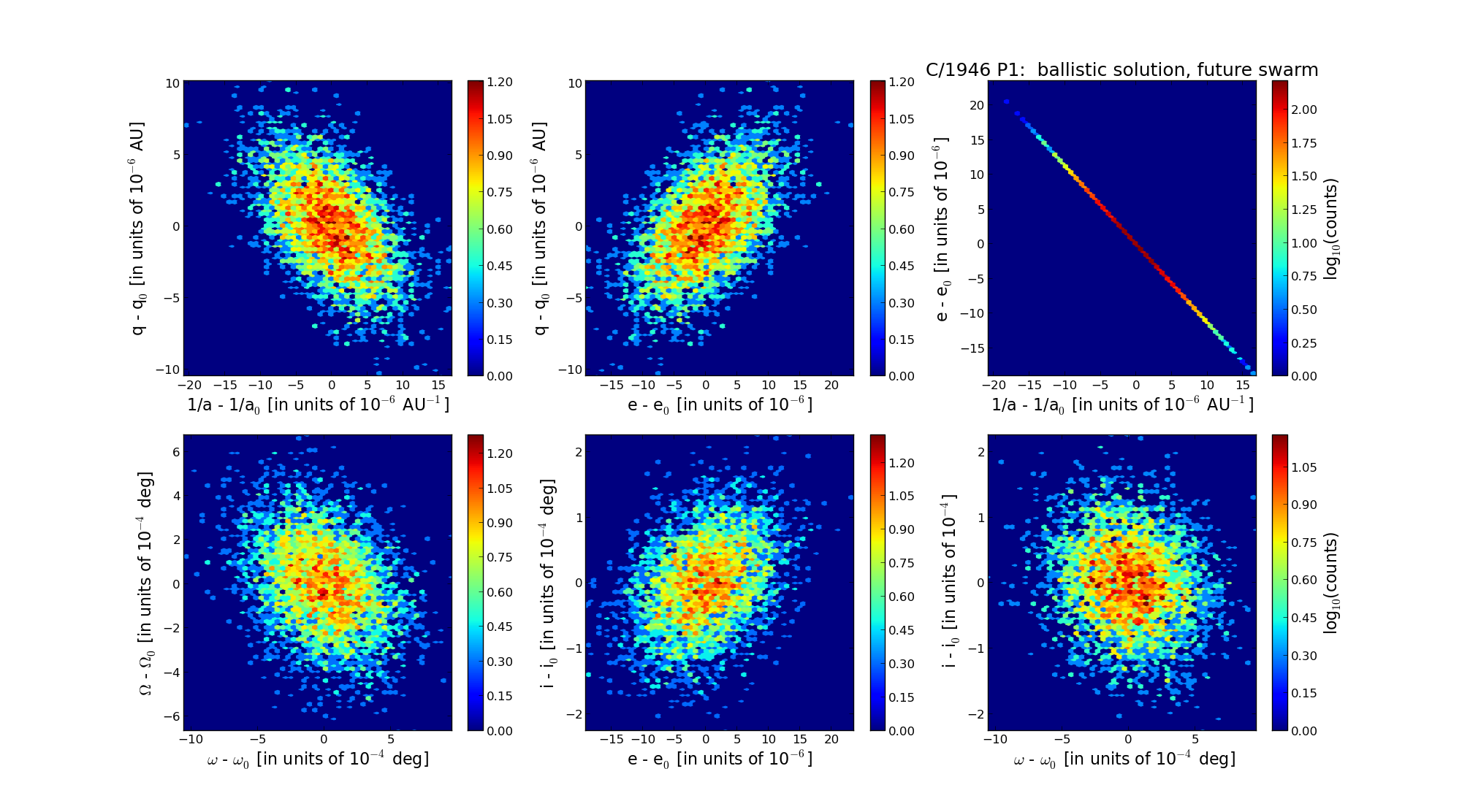C/1946 P1 Jones
more info
Comet C/1946 P1 was discovered on 6 August 1946 by Albert F.A.L. Jones (Timaru, New Zealand), that is 3.7 months before its perihelion passage, and the comet was last seen on 23 November 1948 [Kronk, Cometography: Volume 4].
This comet made its closest approach to the Earth on 4 October 1946 (1.913 au), that is about three weeks before its perihelion passage.
Solution given here is based on data spanning over 2.279 yr in a range of heliocentric distances from 1.625 au through perihelion (1.136 au) to 8.170 au.
This Oort spike comet suffers very slight planetary perturbations during its passage through the planetary system, and in the next passage through the perihelion it will enter the planet zone as Oort spike comet (see future barycentric orbits given here).
More details in Królikowska et al. 2014.
This comet made its closest approach to the Earth on 4 October 1946 (1.913 au), that is about three weeks before its perihelion passage.
Solution given here is based on data spanning over 2.279 yr in a range of heliocentric distances from 1.625 au through perihelion (1.136 au) to 8.170 au.
This Oort spike comet suffers very slight planetary perturbations during its passage through the planetary system, and in the next passage through the perihelion it will enter the planet zone as Oort spike comet (see future barycentric orbits given here).
More details in Królikowska et al. 2014.
| solution description | ||
|---|---|---|
| number of observations | 144 | |
| data interval | 1946 08 13 – 1948 11 23 | |
| data type | perihelion within the observation arc (FULL) | |
| data arc selection | entire data set (STD) | |
| range of heliocentric distances | 1.62 au – 1.14 au (perihelion) – 8.17 au | |
| detectability of NG effects in the comet's motion | NG effects not determinable | |
| type of model of motion | GR - gravitational orbit | |
| data weighting | YES | |
| number of residuals | 257 | |
| RMS [arcseconds] | 0.99 | |
| orbit quality class | 1a | |
| orbital elements (barycentric ecliptic J2000) | ||
|---|---|---|
| Epoch | 2245 06 21 | |
| perihelion date | 1946 10 26.92277872 | ± 0.00050934 |
| perihelion distance [au] | 1.13244087 | ± 0.00000300 |
| eccentricity | 0.99997447 | ± 0.00000575 |
| argument of perihelion [°] | 320.262683 | ± 0.000284 |
| ascending node [°] | 238.420478 | ± 0.000193 |
| inclination [°] | 56.958209 | ± 0.000063 |
| reciprocal semi-major axis [10-6 au-1] | 22.54 | ± 5.08 |
| file containing 5001 VCs swarm |
|---|
| 1946p1a5.bpl |

